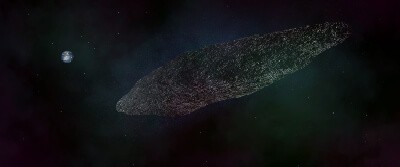First Interstellar Asteroid Identified in Our Solar System

By Mae Pyer
On October 19, 2017, a European Southern Observatory (ESO) telescope in Hawaii observed a faint point of light traveling across the sky. After a few days of computing, what had originally been classified as a comet was identified as a 400-meter-long asteroid later named 1I/2017 U1, formally, `Oumuamua. Further observations confirmed that this body, unlike other asteroids and comets, originated from interstellar space instead of inside our solar system.
New Discoveries Ahead
Researchers at the European Southern Observatory (ESO) in Garching, Germany had to act fast before the asteroid’s orbit sent it back to interstellar space and out of the range of telescopes.
Using ESO’s Very Large Telescope (VLT), scientists measured `Oumuamua’s orbit, brightness and color. These images, combined with information from the Focal Reducer and low dispersion Spectrograph (FORS), revealed that the asteroid varies in brightness throughout its orbit and that it spins on its axis every 7.3 hours.
"This unusually large variation in brightness means that the object is highly elongated: about ten times as long as it is wide, with a complex, convoluted shape. We also found that it has a dark red color, similar to objects in the outer solar system, and confirmed that it is completely inert. Until this point, interstellar asteroids like this have been passing through our solar system once a year, going undetected until now without the faintest hint of dust around it,” explained Karen Meech, lead astronomer at the Institute for Astronomy in Hawaii.
Based on the asteroid’s properties, scientists theorize that it’s a dense object with high metal content. Its surface most likely lacks water in solid and liquid form and has a dark red color, which is probably a result of radiation from cosmic rays over time.
Technological advances have allowed for more powerful telescopes to locate asteroids that are hard to see, leading to this unique discovery and prompting the International Astronomical Union to add interstellar asteroids as a new class of objects. In the future, scientists hope to learn more about asteroids like `Oumuamua so they can shed light on where they originate from and their path through the galaxy.
Discussion Questions
- Activity: Have students research the similarities and differences between asteroids, comets and meteors. Discuss as a class.
- Discuss how the Earth’s spin, axial tilt, and distance from the sun contribute to different conditions around the globe.
Vocabulary
- Asteroid
- Solar System
- Orbit
